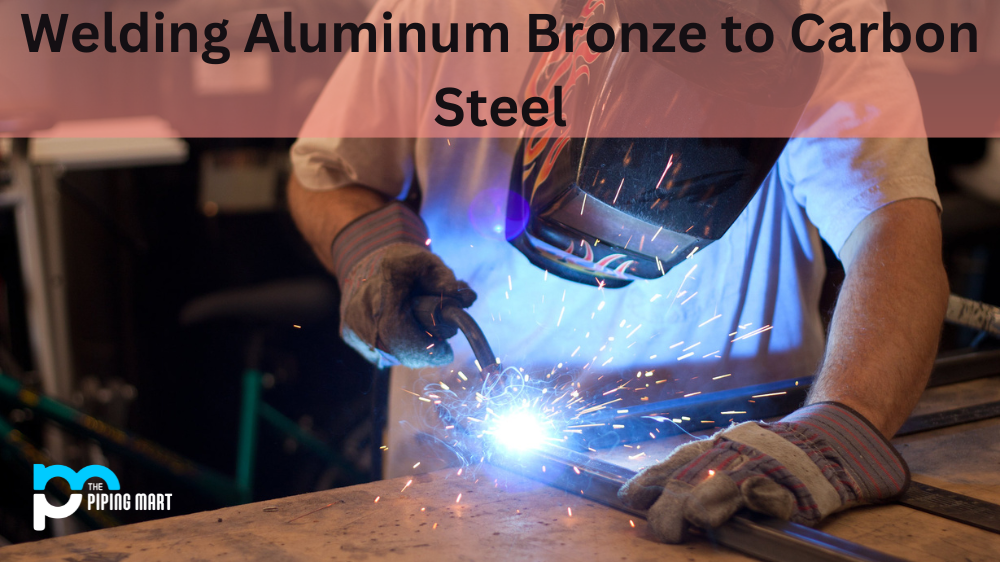Welding aluminum bronze to carbon steel is a process that requires skill and knowledge of the different metals involved. The two metals have very different properties, so it’s important to understand how they interact with each other in order to ensure a successful weld. To help you out, we’ve put together an overview of the welding process between aluminum bronze and carbon steel.
What Is Aluminum Bronze?
Aluminum bronze is an alloy made up of copper, aluminum, silicon, and iron. It has excellent wear resistance and high tensile strength at elevated temperatures. This makes it ideal for applications such as valve stems, bearings, bushings, and pump components. Additionally, aluminum bronze has good corrosion resistance in seawater environments, making it suitable for marine use.
What Is Carbon Steel?
Carbon steel is an alloy composed mostly of iron with small amounts of manganese, sulfur, phosphorus, and silicon added for strength and durability. This type of steel is often referred to as mild steel because it can be easily cut and shaped into various forms without fear of cracking or shattering due to its low hardness level. Carbon steel is also resistant to corrosion when exposed to air or moisture due to its low carbon content, which helps prevent rust formation on its surface.
Welding Process
When welding aluminum bronze to carbon steel, it’s important that the correct welding rod be used. The two metals have varying melting points, so the rod must be capable of melting both alloys simultaneously without causing any damage or distortion in either material’s structure or composition. The rod should also be able to withstand the high heat generated during welding while still providing strong bonds between both materials when cooled down again afterward. Generally speaking, stainless steel rods are usually recommended for this application, but other variants, such as nickel-based alloys, may also be used depending on the application’s requirements. Once you have selected your rod, you can begin welding the two pieces together by heating them up until they reach their respective melting points before pressing them together firmly for a few seconds until a strong bond has formed between them both once again after cooling down again afterward.
It’s important that proper safety precautions are taken when performing this task, as sparks from heated metal can cause serious injury if contact is made with skin or eyes, so protective clothing and eyewear must always be worn when welding these metals together.
Additionally, dust masks should also be worn since inhaling particles from heated metal can cause respiratory issues over time. Additionally, dust masks should also be worn since inhaling particles from heated metal can cause respiratory issues over time.
Can carbon steel be welded to aluminum?
Steel and aluminum are two very different metals, with steel being much heavier and harder than aluminum. Steel cannot be welded to aluminum using conventional welding techniques like MIG, TIG, oxy-acetylene and soldering due to their substantial differences in chemical makeup and metallurgical properties. The best way to join steel to aluminum is a process known as diffusion bonding which is often used on components that need to be made of multiple disparate metals. This process utilizes extremely high temperatures while applying pressure, allowing the molecules of each metal to pass freely into each other forming a strong bond known as a “lick”. Diffusion bonding can become quite complicated if done incorrectly so it is often recommended that an experienced professional take on this task.
Conclusion
Welding aluminum bronze to carbon steel requires skill and knowledge of the different metals involved in order to create a successful weld. Selecting the right welding rod is essential, as well as ensuring proper safety measures are taken while performing this task in order to protect yourself from potential harm caused by heated metal particles or sparks that occur during the process itself. With these tips in mind, you’ll soon find yourself completing successful welds between these two materials in no time at all!

Pipingmart is a B2B portal that specializes in metal, industrial and piping items. Additionally, we share the latest information and information about materials, products and various types of grades to assist businesses that are involved in this business.




